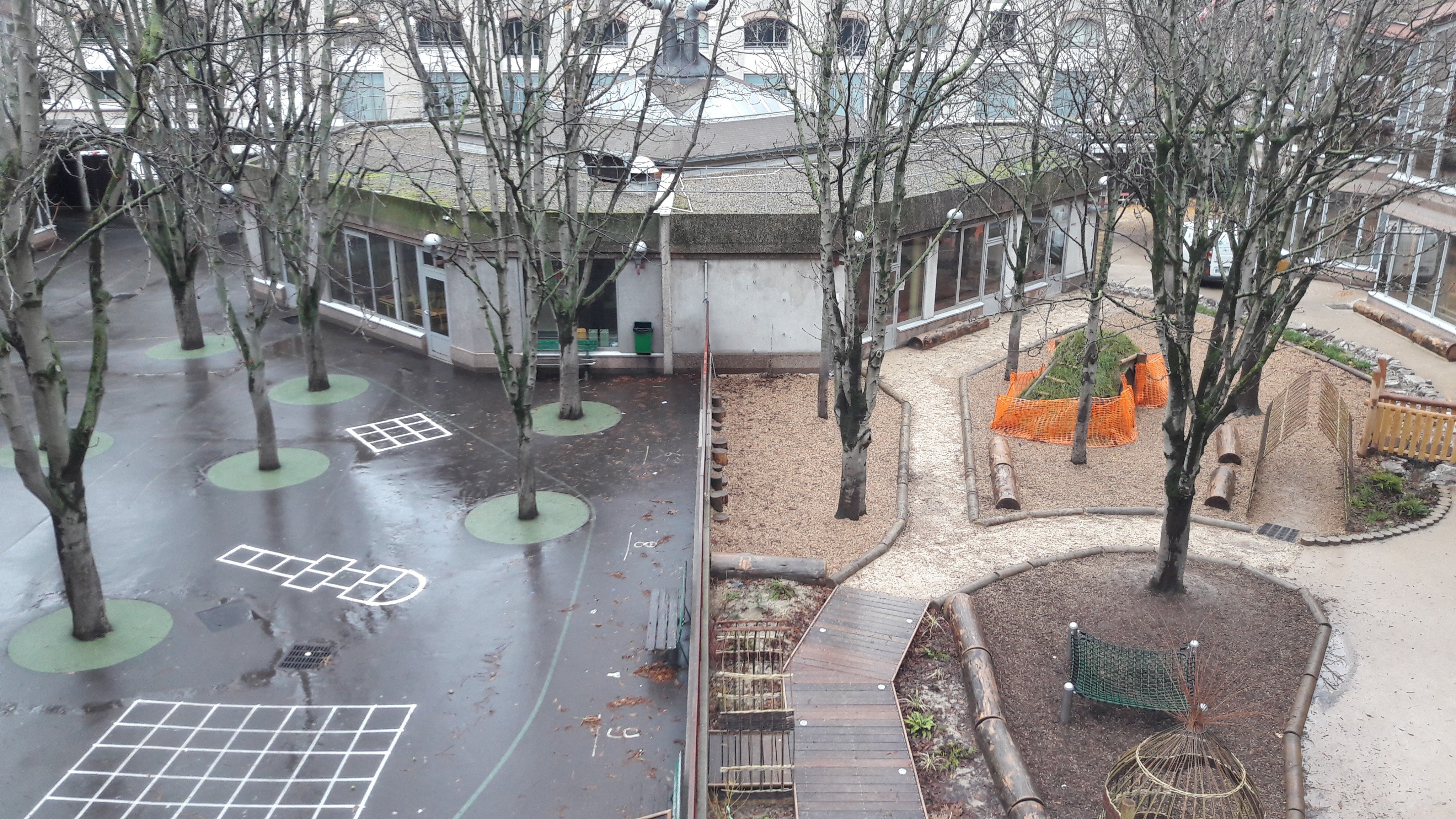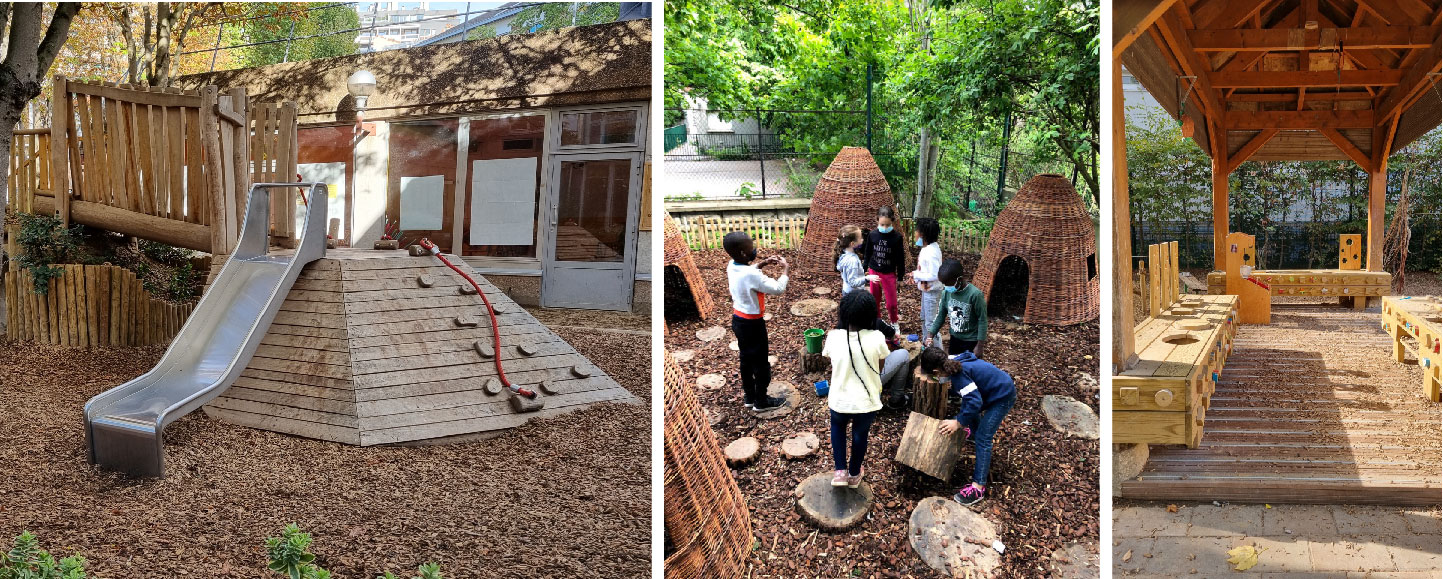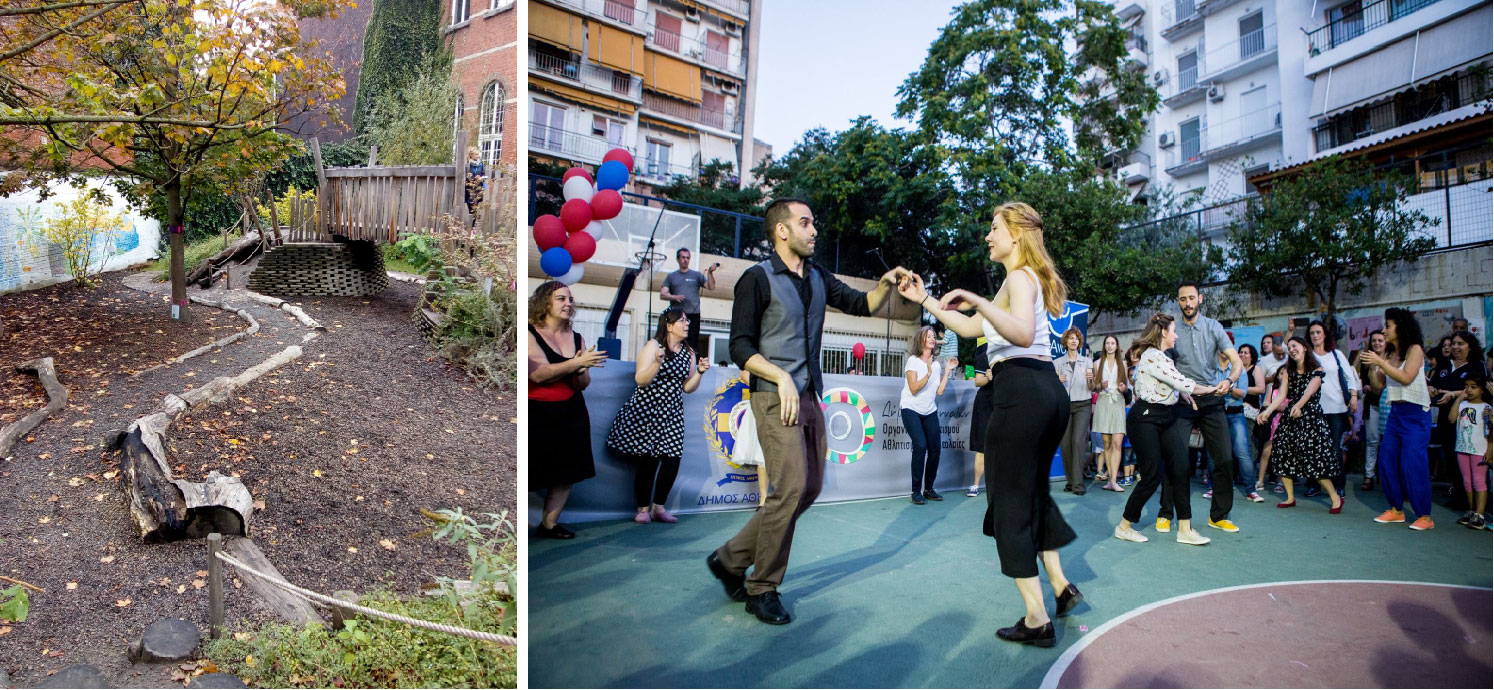Tips n’ Tricks for a Green and Playful Schoolyard! Join us at the upcoming webinar and learn about the OASIS recommendations.

Time: 16h00 - 17h30 (CEST)// 4:00 p.m. to 5:30 p.m. (CEST) (Paris time)
The OASIS Schoolyards project came a long way. Following the 10 transformed schoolyards with the support and co-funding of the ERDF – UIA program, the City of Paris proudly announces the transformation of 100 schoolyards in total. This ambitious achievement comes with lots of lessons learned and a wealth of knowledge on what works or not when aiming for green and natural schoolyards. Undoubtedly, there is no one-size-fits-all solution as every schoolyard has different spatial characteristics, environmental challenges, and user needs to fulfill. However, the City of Paris, in collaboration with the CAUE75 - the consortium partner responsible for the design of the schoolyards’ transformation, has compiled a handy booklet of recommendations for technical solutions that can be useful for replicating the OASIS approach in your city!
The booklet is available in English, French, and Spanish; you can download it here.
Following the launch of the booklet’s final version last spring, the City of Paris is coordinating a second online Webinar to offer an overview of the booklet and open the discussion with cities interested in adopting the OASIS approach. The webinar is not only relevant to designers and engineers from Municipal Technical Departments, but it can also provide inspiring ideas to educators and policymakers as well.
In this booklet, you can find recommendations for:
The OASIS approach aimed to dedicate 20-30% of the total area to nature. To achieve this goal, a wide range of different solutions and materials have been used in the transformed schoolyards. Large portions of the existing asphalt have been removed from the schoolyards and substituted with natural materials such as soil, wood chips, sand, or vegetation.
Almost every schoolyard of the OASIS kindergartens and elementary schools has vegetable gardens for the pupils, and their teachers have accommodated their curriculum to include relevant classes for gardening and learning about biodiversity. In doing so, vegetated areas are maintained primarily by the pupils and the educators while also the schoolyard becomes a welcoming environment for urban flora and fauna. Moreover, low-cost nature-based solutions such as small rain gardens and swales for stormwater management and water tanks that collect stormwater for irrigation have been created in the schoolyards.

©Martin Hendel
Schoolyards are expected to accommodate multiple functions other than playtime and recess, such as sports classes or pathways for emergency vehicles to pass. Various paving materials have been used in the OASIS Schoolyards depending on their performance in the local climatic conditions, applicability, and cost. For the 10 UIA OASIS Schools, the most used options were paving stones and grass pavers, or even sometimes conventional light-colored asphalt that can be used for runoff areas. Although the light-colored asphalt creates an impermeable surface, however, due to the reflection of sunlight, the temperature of this asphalt pavement and the underlying asphalt layers is likely to be lower than in standard dark-colored asphalt pavement.
Re-using material
Since the OASIS is a project that celebrates sustainability, in many cases, materials were re-used to build structures at the transformed schoolyards, or equipment was refurbished and re-installed in other public spaces.
The old paving stones from the Jeanne D’ Arc schoolyard were carefully disassembled and became the building material for the sitting area at the Maryse Hilsz elementary school. Parents and children built the bench during a participatory workshop led by CAUE75.

(Right)Maryse Hilsz elementary school, participatory workshop with children & parents
©CAUE75
One of the primary objectives of the OASIS Schoolyards project has been to mitigate the Urban Heat Island phenomenon at the local scale. Natural shading from trees or artificial shading structures has been strategically included in the schoolyard's design to provide thermal comfort to the users. Moreover, artists coordinated workshops with children to design more creative shading structures for their schools and eventually add some fun and color to the otherwise plain facades of the building.

©CAUE75
Although the concept of the OASIS project emerged from the Resilient Paris strategy as an Action Plan for climate adaptation, play activities and children’s wellbeing became a priority objective during the implementation phase.
The OASIS Schoolyards are not only designed based on the outcomes of the co-creation activities with children. Still, they are also thoroughly studied to provide a place for risk play, social interactions, play with nature, and exploration.In this booklet, you will find implemented examples for designing the space and its equipment to provide the appropriate yet safe environment for countless playful and learning activities. More specifically, such activities include: climbing, sliding, swinging, building, making music, exploring biodiversity, playing with water, gathering in quiet places, hiding in small groups, and so on.

(climbing walls, wooden huts, mud kitchen)
©CAUE75
The Covid-19 outbreak made the accommodation of outdoor learning a more urgent need for schools worldwide to function safely. However, there is still much to be done in the school curriculum and teachers’ training to incorporate outdoor learning into their everyday class schedule.
The OASIS schoolyards prioritized this need early on during the design phase; therefore, almost every school has a different area designed to facilitate outdoor classes.

©CAUE75
Throughout the entire UIA journey, the OASIS approach was inspired by multiple projects around the world. The booklet's final chapter includes a collection of all those projects that have influenced the different aspects of the OASIS Schoolyards. From the natural playgrounds in Antwerp and Brussels to the open schoolyards in Barcelona and Athens and many more. Those cases can inspire any city that aims to re-think its schools' design and role in the neighborhood.

(Right) Open Schools program, Athens, Greece ©AthensPartnership
About this resource
The Urban Innovative Actions (UIA) is a European Union initiative that provided funding to urban areas across Europe to test new and unproven solutions to urban challenges. The initiative had a total ERDF budget of €372 million for 2014-2020.
Similar content




